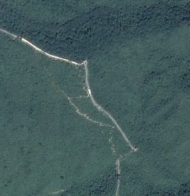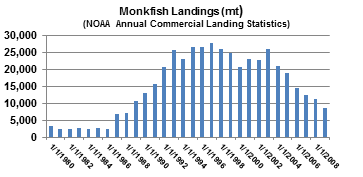October 2, 2017 — The reasons for Big Oil’s (now more accurately Big Energy’s) focus on fisheries – and on demonizing fishing and fishermen – has been fairly obvious since a coalition of fishermen and environmentalists successfully stopped energy exploration on Georges Bank in the early 80s. Using a handful of ocean oriented ENGOs as their agents, the Pew Charitable Trusts and other “charitable” trusts funded a hugely expensive campaign that the domestic fishing industry is still suffering from, but that campaign has paid off handsomely to the entities that participated in or funded it.
However, the entry of Philadelphia’s Lenfest Foundation into the fray, particularly considering that operational control was delegated to Pew, appeared to put the participation of other foundations with roots in the high tech area in a different light. Packard, Moore and Lenfest all working together with Pew et al to scuttle the public image and “revolutionize” the financial and social underpinnings of an entire industry in an apparently coordinated way started to make some sense (read more here).
But my thinking on this was further crystallized after reading a recent article in the New York Times. From the February 22, 2016 Fishnet:
“The authors (of the most recent Daniel Pauly assault on commercial fishing) acknowledge, and it will probably come as no surprise to most readers, “that The Pew Charitable Trusts, Philadelphia, funded the Sea Around Us from 1999 to 2014, during which the bulk of the catch reconstruction work was performed.” However, it might be news that “since mid-2014, the Sea Around Us has been funded mainly by The Paul G. Allen Family Foundation.” If anyone wonders why one of the founders of Microsoft might be interested in supporting research by Daniel Pauly, from an article in the NY Times last week – Microsoft Plumbs Ocean’s Depths to Test Underwater Data Center)
“REDMOND, Wash. — Taking a page from Jules Verne, researchers at Microsoft believe the future of data centers may be under the sea. Microsoft has tested a prototype of a self-contained data center that can operate hundreds of feet below the surface of the ocean, eliminating one of the technology industry’s most expensive problems: the air-conditioning bill. Today’s data centers, which power everything from streaming video to social networking and email, contain thousands of computer servers generating lots of heat. When there is too much heat, the servers crash. Putting the gear under cold ocean water could fix the problem. It may also answer the exponentially growing energy demands of the computing world be-cause Microsoft is considering pairing the system either with a turbine or a tidal energy system to generate electricity. The effort, code-named Project Natick, might lead to strands of giant steel tubes linked by fiber optic cables placed on the seafloor. Another possibility would suspend containers shaped like jelly beans beneath the surface to capture the ocean current with turbines that generate electricity.”
Of course this needs to be coupled with Microsoft’s commitment to the future of “cloud computing” (for those readers who have successfully avoided advanced nerdhood up until now, the “cloud” is just a lot of web-connected servers housed in what are called server farms. Server farms are becoming increasingly expensive to operate shoreside – see the NY Times article linked above) and do a Google search on “Microsoft cloud future” to see where the tech industry thinks Microsoft is heading vis a vis cloud computing.
Is it possible that in the near future we’ll be reading foundation-funded research reports from our neighbors in British Columbia “proving” that submerged server farms put in place by the well-known Redmond conservationists provide much needed shelter for a myriad of marine creatures that are threatened by those rapacious fisher-men? Or that Marine Protected Areas are a really logical place to put those submerged servers?”
If you haven’t fully embraced the high-tech, internet-based wonders that are now easily and affordably available to virtually all of us – how about a Brita water purifier that will automatically order another filter before the old one needs replacing? – the major impetus for this seems to be to get folks to spend money without consciously deciding to do so. Propping this all up, making it possible, is “cloud computing” enabling you to receive a Brita filter and to get Amazon and Brita handsomely paid for getting it to you without you being involved.
With the increase in web-connected, web-enabled, web-anythinged appliances, processes, monitors, alarms, lighting and who knows what else in the future, and in hi-definition video and music streaming, a rapid growth in the capacity of the so-called cloud, which is going to become increasingly crowded, is guaranteed. That means that the demand for server farms will be increasing as well – and the closer those server farms are to the demand (population centers), the more efficient they will be.
As the Microsoft interest clearly demonstrates, alternatives to land based server farms in close proximity to population centers are going to become a high priority, and the only alternative is going to be siting them in the ocean – which offers the additional benefit of significantly reducing, or perhaps eliminating, cooling costs.
These sub-surface server farms will be as compatible with fishing as offshore power generation or the petroleum industry are. Would there be a more rational solution to what has already become a significant problem, given hundreds of billions of dollars in the bank, than for these high tech industries that are committed to a future in the oceans, than to marginalize fishermen.



















